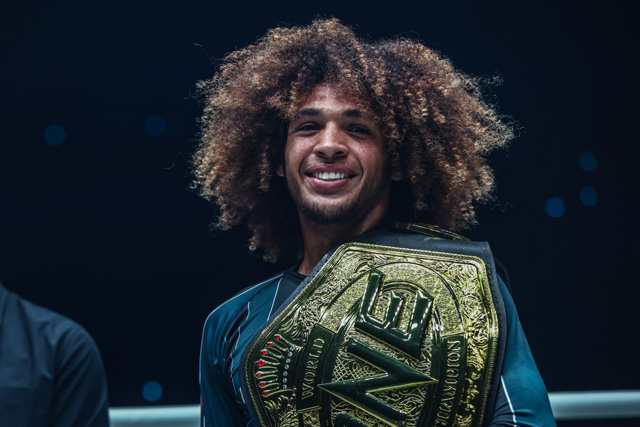The Bottom Line: Cold Realities
Editor’s note: The views and opinions expressed below are those of the author and do not necessarily reflect the views of Sherdog.com, its affiliates and sponsors or its parent company, Evolve Media.
Advertisement
The latest season of “The Ultimate Fighter” kicked off on April 19 with all the hallmarks of the more successful early editions of the show. The fighters featured more big personalities than usual, and the general theme of personal redemption made the stakes feel higher. Most importantly, the dynamic between the coaches was strong, with two upper-echelon competitors making no secret of their mutual disdain. “The Ultimate Fighter” at its advanced age possesses only a fraction of the power it once did to create stars and build pay-per-views, but the Cody Garbrandt-T.J. Dillashaw rivalry is exactly what you’d hope for to advance those goals.
Garbrandt-Dillashaw in general has all the elements that are usually present for a big UFC fight. Both fighters are at the top of their game, with Garbrandt undefeated professionally and Dillashaw’s only defeats since 2011 coming via controversial split decisions. It’s hard to imagine either fighter decisively losing because their fully formed current versions haven’t faced decisive defeat. The betting odds for the fight reflect the evenness of the matchup, with Garbrandt a very narrow favorite.
Garbrandt and Dillashaw also feature fan-friendly styles. Both men
like to strike and their fights are usually exciting, having
accumulated plenty of bonuses during their
Ultimate Fighting Championship tenures. Unlike some in the
lighter-weight divisions, they also tend to finish fights.
Collectively, the bantamweight title competitors have secured
finishes in 72 percent of their wins. That’s a higher rate than the
participants in the most recent light heavyweight (Daniel
Cormier-Anthony
Johnson) and middleweight (Tyron
Woodley-Stephen
Thompson) title fights.
Beyond the fight being one of the most high-end contests of the year and a likely exciting bout, it also has a grudge component with an easy to understand backstory. Dillashaw was part of Urijah Faber’s Team Alpha Male camp before leaving his former mentor to join new mentor Duane Ludwig. Now, Faber’s new Team Alpha Male protégé, Garbrandt, wants revenge on the “snake in the grass” for his perceived disloyalty. Dillashaw, meanwhile, resents his name being dragged through the mud for simply doing what was the best thing for his career. The mutual animosity is palpable, and each man has understandable reason to dislike the other.
To be clear, Garbrandt and Dillashaw aren’t superstars yet. However, this is precisely the sort of fight that should help to create new superstars, and the UFC would be wise to put all of its promotional muscle into trying to accomplish that goal. The UFC seems to get that, giving Dillashaw and Garbrandt the coaching slots on “The Ultimate Fighter” and placing them on the high-profile UFC 213 card during International Fight Week. That is traditionally the way new stars have been created. However, that raises a troubling question if Garbrandt-Dillashaw doesn’t become a big deal: Why not? Why might this fight that has so much going for it not turn the participants into drawing cards?
That may seem like a pessimistic question to raise months out from the fight. It’s just that the recent history isn’t good. In the past few years, Conor McGregor and Ronda Rousey broke through to unprecedented heights. Few have come close to joining them. Since McGregor’s first pay-per-view main event at UFC 189, every pay-per-view featuring McGregor or Rousey has done over 800,000 buys. Every other pay-per-view except the loaded UFC 200 and UFC 203, which featured the novelty of Phil Brooks’ MMA debut, has drawn fewer than 325,000 buys. The middle class is dead, and fights like Garbrandt-Dillashaw should be the ones to occupy that middle zone.
Maybe Garbrandt-Dillashaw will connect with a larger audience, and we’ll see that in the interest level for their fight at UFC 213 and their fights moving forward. If that doesn’t happen, it’s the perfect case study for how the UFC ought to be spending more time looking at its promotional formula and coming up with novel methods to sell the product to the public. An “Ultimate Fighter” coaching slot and placement on a major card is what historically has worked, and the individuals involved are highly marketable. If that doesn’t work now, it suggests that perhaps new formulas need to be designed to elevate the stature of fighters.
When WME-IMG purchased the UFC, it offered new possibilities in terms of doors the talent agency could open as well as just providing new sets of eyes that could think outside the box to grow the sport even further. Instead, the UFC has largely run the same as always. In a lot of ways, that’s a good thing. The people in charge of the UFC knew what they were doing and the new owners should not have been thinking in terms of blowing up things. However, that doesn’t mean there aren’t improvements to be made. That’s particularly true on the promotional end, where staleness has often set in. The volume of shows doesn’t help matters.
Garbrandt-Dillashaw should be a big deal to a broad base of fans. Hopefully that’s exactly what it will be by the time the fight arrives in July. If it isn’t, it’s a sign that UFC shouldn’t simply be plugging potential stars into a tried-and-true formula and instead should be brainstorming for new approaches to get fans invested in fights that offer so much for those who make that investment.
Related Articles







